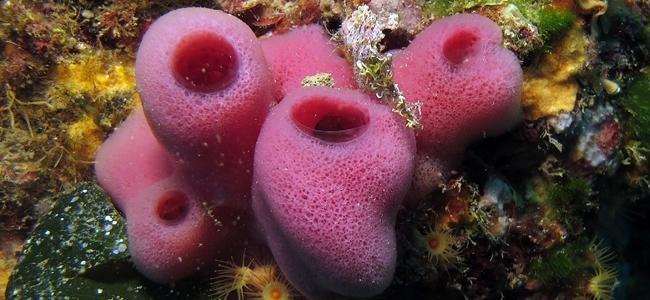Sponges are aquatic animals, mostly marine and sessile, which lack structured tissue. They form the so-called Prolifera phylum, a name that comes from the Latin words porus (pores) and fera (animal). Its form of feeding consists of filtering water by means of a system of pores, channels and chambers that generate currents thanks to flagellated cells, the coanocytes. The majority of Sponges form a sack, with a large opening at the top, called an oscule, through which the filtered water flows. The walls of the sac contain a multitude of small pores through which the water enters the central cavity, where the organic particles from which it feeds are filtered. Its filtering capacity is very remarkable, a Sponge about 10cm high and 1cm in diameter is capable of filtering more than 22 litres of water a day. Sponges are ecologically very successful; they are the dominant animals in many marine benthic habitats. There are approximately 9,000 species of Sponges, of which only 150 species live in fresh water.
Sponges possess a unique and extraordinary property: when their cells are separated by mechanical means (e.g. by sieving), they immediately reassemble and form, within a few weeks, a complete and functional individual. Sponges possess a surprising variety of toxins and antibiotics that they use to prevent predation and competition for the substrate. Some of these compounds have been shown to be pharmacologically useful, with anti-inflammatory, cardiovascular, gastrointestinal, antiviral, anti-tumor properties, etc., and are being intensively researched.
Few animals (some opistobranchian Molluscs, Echinoderms and fish) feed on Sponges, due to their spicule skeleton and their toxicity. They are often very specific species and prey on one particular species of Sponge. Sponges are used by many invertebrates and various fishes as a place of residence or refuge. Some Gastropods and Bivalves have Sponges encrusted on their shells and many Crabs collect Sponges which they place on their shells.


